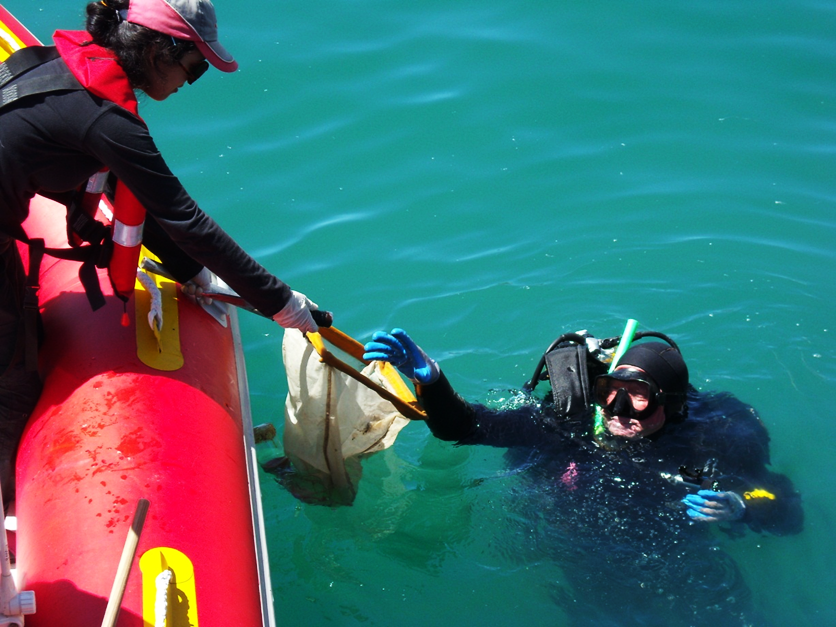27 May 2014 | By Tammy Robinson
Marine alien species have not been as well studied in South Africa as their terrestrial counterparts. However, recent research by C·I·B researchers has shed some light on the occurrence of marine alien species in Western Cape harbours.
Marine organisms have been moved around the globe for centuries. These organisms travel through a number of ways, for example, as external fouling on the hulls of ships and yachts, in ballast water, through the movement of aquaculture organisms and via the aquarium and pet trades. In a recent study C·I·B researchers Koebraa Peters, Dr Tammy Robinson and Professor Charles Griffiths set out to survey Western Cape harbours for marine alien species.
While they had expected the highest number of aliens to be in the larger harbours, surprisingly they found the most aliens occurred in Hout Bay harbour, one of the smaller local harbours. Interestingly, harbours on either side of Cape Point (Table Bay, Hout Bay, Simon’s Town and Kalk Bay) had higher numbers of aliens than other harbours.

Another important finding was that the presence of yachts was the most important factor predicting which harbours have higher numbers of alien species. In addition, some new discoveries were made. The alien disc lamp shell (Discinisca tenuis) was recorded for the first time outside of aquaculture facilities, where it was previously thought to be contained. Also, the alien amphipod Ericthonius difformis was recorded in South African waters for the first time.
Dr Tammy Robinson, C·I·B core team member, says the study is significant, as it can help to prioritise which harbours should be monitored for alien species: “The findings of this study have not only helped us to close the gap in our knowledge around the spread of marine alien species, but have opened the doors for new and exciting research that will include more harbours along the South African coastline.”
Read the paper
For more information, contact Dr Tammy Robinson at trobins@sun.ac.za


